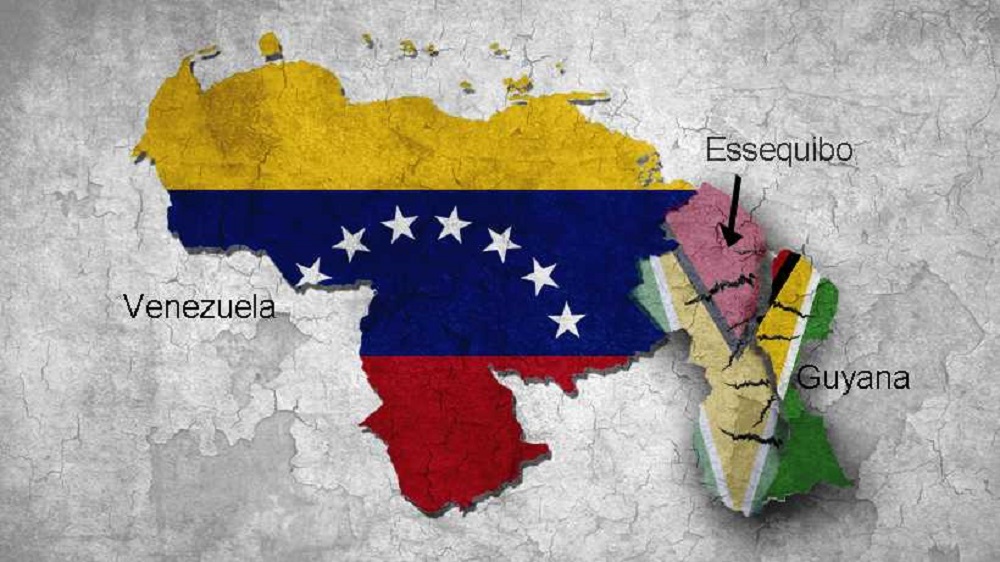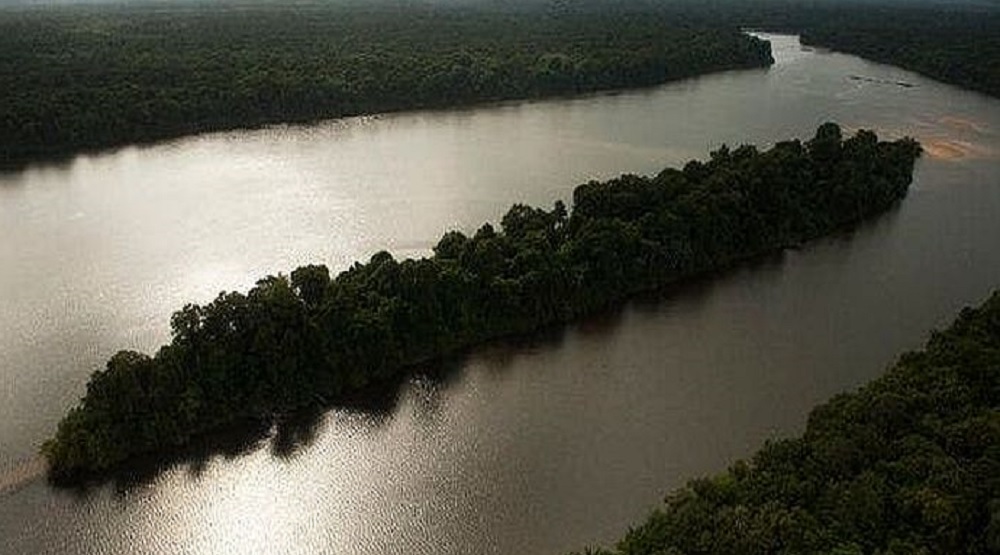RIO DE JANEIRO, BRAZIL – We are talking about the Essequibo, or Guayana Esequiba, a border region of 159,542 square kilometers – slightly less than the size of the state of Florida in the United States – which currently comprises 75% of Guyana, but which Venezuela has claimed as its own since the 19th century.
Just as Chile and Bolivia settled the latter’s access to the sea before the International Court of Justice in The Hague, with a result in favor of the Chileans in 2018, or just as Nicaragua claimed, before the same judicial body, a portion of Colombia’s territorial sea and obtained it in 2012, Guyana seeks to make it clear that the Essequibo is its own, after the beginning of the trial in The Hague on February 26, 2021.

While this takes place, and knowing that a negotiation may take longer than estimated by the ICJ, we delve into the origin of this dispute and what is at stake.
The answer takes us back to the colonial past of Guyana, a South American territory bathed by the Atlantic Ocean, where the Arawak Indians and later the Caribs inhabited. By the fifteenth century, the European incursion was latent. According to Charles Davidson, current Anglican bishop in Guyana, the history of his country is interesting: the French entered the territory and for that reason the cemetery in Georgetown is called ‘Le Repentir’ or ‘The Repentance’.
There were also the Dutch, which is why one city is called ‘Nieuw Amsterdam’ or New Amsterdam. And those who inhabited it most were the British, whose legacy is evidenced by the fact that Guyana is the only country in South America whose official language is English.
Read: Concerns Heighten Over Venezuela/Guyana Border Controversy
And the Spanish? Actually, they were the first Europeans to explore the territory, with the incursion of Alonso de Ojeda and Pedro Alonso Niño in 1499, along the course of the Esequibo and Orinoco rivers. It was not until a century later, in 1594, that Spain made official the possession of the Province of Guayana, and integrated it into its colonies in America.
However, the Spanish neglected this region. After concentrating on the Viceroyalties of New Spain (present-day Mexico), New Granada (present-day Colombia), Peru and Rio de la Plata, Spain had no opportunities left to defend the Guiana Province after the Dutch invasion of 1615.
So the Dutch, appropriating the Guyanese territory, created three important colonies: Demerara, Berbice and Esequibo. For their time, these lands were rich in sugar cane production, and increasingly attractive to the British, who formulated themselves as an imperial power in the world by the 19th century.
The British delineation of Guyana’s western frontier that outraged Venezuela
Just 200 years after the invasion of the Dutch, and after multiple revolts of sugar cane slaves in Guyana, the British got the Netherlands to cede these colonies through a treaty in 1814 to form British Guiana. But there was no clarity as to where the border would be drawn with the Captaincy General of Venezuela, which belonged to what was then Gran Colombia.
This nebulous border wanted to be clarified by the British in 1840, when they asked their explorer Robert Schomburgk to mark a dividing line between Venezuela and British Guiana. While the Venezuelans, who by that time had been separated from Gran Colombia for a decade, thought that as a sovereign territory their eastern limit was the margin of the Esequibo River, the British annexed with Schomburgk’s tracing about 80,000 square kilometers to the west.

According to Michael Moohr, professor of economics at Bucknell University, the abolition of slavery and the discovery of gold changed the economic course of this territory.
Outraged in 1841, Venezuelans protested internationally and, knowing that they could not confront the British alone, they turned to their American counterparts. The Americans proposed the international judicial scenario called the Paris Arbitral Award of 1899. This was a supposedly impartial tribunal to resolve the disputed boundary.
The Venezuelans had as an argument the legal principle called “Uti possidetis iure” or “as you possess under law”, which guarantees maintaining their full colonial territory even after independence from Spain. But the result of the Parisian court favored the English and awarded them the territory of the Essequibo, as Robert Schomburgk had drawn it.
Read: Venezuela Rejects ICJ Ruling on Border Controversy with Guyana
The defeated Venezuela found in 1949, 50 years later, an alleged interference of the British in the decisive vote of the Russian jurist Friedrich Martens in that Arbitral Award of 1899. So they not only declared the award null and void, but also denounced it before the United Nations in 1962.
These were post-war times when the British Empire was dismembering and losing a large number of colonies in Africa, which reduced its former power to the expression of yielding to international pressures. So in 1966, three months before its colony Guyana in South America declared independence, it signed an international agreement with Venezuela, known as the Geneva Agreement. This agreement stipulated that the United Kingdom recognized the Venezuelan territorial claim, and if no agreement was reached between the parties, the United Nations Secretary General was granted the power to choose the best way to resolve it.
The oil discovery in Guyanese waters that fueled the Essequibo dispute
Thus, for decades, Guyana has clung to the Paris Arbitral Award of 1899, and Venezuela to the Geneva Agreement of 1966. The truth is that the Essequibo has remained in dispute with ups and downs. One of the lows was during the mandate of President Hugo Chávez, who did not want to polemicize on the matter, and kept the dispute on low heat.
Read: The South American Guyana-Suriname Basin Could Be The Last Big Oil Boom
But his successor Nicolás Maduro changed the tone, after in 2015 the U.S. oil company Exxon Mobil assured that under Guyanese continental waters there are hidden oil reserves estimated between 5,500 to 8,000 million barrels.
This is a discovery that could put Guyana, inhabited mostly by descendants of India and sub-Saharan Africa, on the list of rich countries in a matter of years, according to growth estimates of the International Monetary Fund.

This oil mistrust spurred Nicolás Maduro’s Venezuela to declare “the reconquest” and the defense “at all levels” of the Essequibo.
Meanwhile, the trial at the International Court of Justice has just begun with a caveat: Venezuela has officially stated that it does not recognize its jurisdiction and is only attending as a “courtesy”, but not “as a party”. History will tell who will keep this territory.
Source: France24

